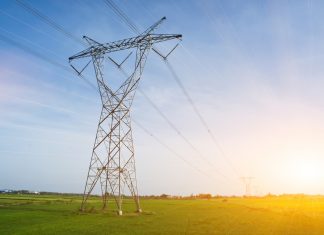PHILIP HOPKINS
By PHILIP HOPKINS
The more than 1000 Latrobe Valley residents opposed to the 200-megawat Delburn Wind Farm (DWF) have vowed not to give up the fight and aim to attract new supporters, arguing the legitimate fears of the grass-roots community has been ignored by the Supreme Court and the state government.
The Strzelecki Community Alliance (SCA), an incorporated association of more than 1000 members, said it had been strong for more than four years and had raised more than $200,000 for the fight.
“The members are united and are not going away. Never before in Australia has a wind farm with offshore-sized turbines been proposed to be so close to so many people and placed within a location well known for serious bushfire events,” SCA said.
Supreme Court Justice Melinda Richards found last month that no part of the wind farm was within five kilometres of three towns in the Latrobe Valley and was thus not contrary to the Latrobe planning scheme.
The 33-turbines, each 250 metres high, will be located on pine-plantation land overlapping the Delburn complex fire impact area.
The site is bounded by Coalville to the north, Thorpdale to the west, Darlimurla to the south and Boolarra and Yinnar to the east. With intermittent wind creating worldwide an average 30 per cent capacity of the nominal 200MW output, Delburn is expected to produce on average 70MW of power.
The SCA said in the increasing rush to rollout renewable energy, no consideration had been given to the near neighbours (residents living within 5km of any turbine), the increased risks to them, nor the long term effects on the upcoming generations.
“Near neighbours are denied rights, voice and power to fight the developers and government as they bulldoze ahead with renewable energy targets,” the group said.
Renewable energy targets and the greater good of the wider community were the government’s justification to dismiss the genuine concerns of the near neighbours of the DWF – “those who will be most greatly impacted by the development”.
The SCA said the developers want the community to believe the glossy sales pitch.
“They seek out a willing host for their turbines.
“They go to great lengths to lure friends and individuals to act as supporters and spokespersons to assure the community that this wind farm is for the greater good,” it said.
“They will dismiss any opposition as NIMBYs and ‘climate deniers’.
“It’s just one of a number of strategies to shoo away naysayers, shut down complaints and attempt to get the project over the line as quietly as possible.”
SCA said the trouble for the Delburn developers was the assumption that the immediate neighbours and surrounding communities would roll over and quietly go away.
They were not prepared for the Strzelecki Community Alliance, which believes the community has the right to factual information.
“Let us be clear; we support the transition to renewable energy. However, we have grave concerns about the location of this wind farm. “We will hold OSMI, Delburn Wind Farm, its current international owners, the landholder, local councils and the government to account,” SCA said.
“We are committed to ensuring that every condition of the DWF planning permit is met, and that the construction and operation of the wind farm does not cause harm to the community.”
The SCA said it continued to grow in numbers and “welcomes near neighbours of the DWF to join the alliance as we move forward”.
“The alliance will continue to offer the near neighbours’ guidance, support and advice as we focus on informing the community.”
“The alliance will continue to offer the near neighbours’ guidance, support and advice as we focus on informing the community about the impacts of the DWF,” the group said.
“There is a key focus on providing guidance on recording evidence prior to construction, as well as advising property owners to seek legal advice prior to signing documents or accepting anything from OSMI,” it said.
“We recommend that near neighbours do not sign any agreement with or accept anything from OSMI or Delburn Wind Farm without seeking legal advice independent of the wind farm developers/owners.”
The SCA members reiterated its serious concerns about the wind farm. These included, but were not limited to:
Increased bushfire risk and compromised ability to effectively fight fire;
The site has an extensive history of catastrophic bush fire, SCA emphasised the applicant’s acknowledgement to the planning panel hearing that the “infrastructure will be partially or completely lost at least once in the operating lifetime due to bushfire”;
The ability to effectively use aerial water bombing would suffer, which in turn would compromise support to the ground crew;
Noise nuisance. The DWF acoustician is the same one the developer used at its other wind farm developments, with the Supreme Court last year ordering OSMI’s Bald Hills Wind Farm to stop emitting noise at night and Stockyard Hills Wind Farm facing Supreme Court action;
once the turbines are operating, noise nuisance must be proven by residents;
The impact on aviation, with turbines affecting efficient access to accident scenes for Helimed and compromising aerial fire fighting;
The overwhelming visual impact on near neighbours and the wider community – 1267 homes were identified by the developer, to be within 6km of a proposed turbine, and of these, 103 are within 1-2km. Only 20 of these 1267 properties were assessed. Based on the Australian Bureau of Statistics (2021) there are 2715 dwellings in the townships surrounding the wind farm. “We are concerned that dwellings have been excluded, and the turbines are too big and too close, changing the region’s landscape for generations”;
Property devaluation. There is already anecdotal evidence that those in the community can’t sell their homes due to the permit approval, with buyers withdrawing on announcement of the permit approval, and the developer is allegedly using private property to allow turbine setback of 1km from the centre of homes, rather than a 1km setback from property owner’s boundary;
Electromagnetic interference. The impacts of interference are not fully understood, although the NBN has already advised there is a risk of interference, particularly at the Boolarra and Narracan towers;
Navigational lighting on turbines not assessed. The SCA expect lights on the turbines will be required, which will change the landscape of the skyline for many years;
Impact on wildlife and removal of remnant native vegetation. The impact of wind turbines on birds and bats is well-known; the overlap of the Strzelecki-Alpine biolink and DWF site is significant; and SCA alleges more than 80 per cent of the native vegetation threatened by the DWF comes from ecological vegetation classes listed as vulnerable;
Social licence. The developer, SCA maintains, has strategically gathered support from a small number of friends and family to present the project as accepted by the community. These supporters supplied a petition, which was circulated world-wide by activists, and presented to and accepted by the panel as “support” for the project, thereby negating the overwhelming objection of the close neighbours of this project. “Without informed knowledge of the project and its direct impact on near neighbours, their support is realistically irrelevant to the requirement of the developers to meet the permit requirement of having ‘social licence. This too was ignored’,” said SCA, adding “the ‘neighbourhood benefits scheme’ is hardly a benefit” and;
Jobs bonanza for the community short-lived. “Allegedly up to 24 direct and indirect ongoing jobs after construction is not a just transition for the people of Latrobe Valley. With no disclosure as to how many of these will be on-site, the DWF offers little comfort for those in Latrobe Valley looking for long-term job opportunities,” SCA says.
The SCA defined the “near neighbours” as those who live within 5km of any of the 33 250-metre-high turbines approved by the Minister for Planning. Based on the 2021 Australian Bureau of Statistics (2021), near neighbours meant 6239 residents. Townships within 5km of any one turbine included Boolarra, Coalville, Darlimurla, Delburn, Driffield, Hazelwood, Hernes Oak, Mirboo North, Moe South, Narracan, Thorpdale and Yinnar.
The SCA challenged the planning permit for the DWF in the Supreme Court of Victoria as a prohibited act under schedule 52.32 of the planning scheme, whereby a wind energy facility cannot be less that 5km from a defined urban area identified under this schedule.
The Supreme Court case addressed two matters: the definition of the urban areas in Latrobe City, and whether the 5km is measured from the infrastructure of the wind farm or the title boundary on which it sits.
SCA said the Supreme Court decision, rather than considering Moe-Newborough as one urban area, and Latrobe City as a contiguous city, only considered the urban area as the Moe township boundary.
“This means that Newborough and parts of Moe South are not afforded protection under the scheme,” SCA said.
The decision was made to measure from the wind farm infrastructure, not the Crown Allotment title boundary, which meant the wind farm can be closer to larger communities.
“This has effectively stifled urban growth,” the group said.
“Whilst fence line residents are prevented from building within 1km of the boundary of DWF, the decision allows DWF to be treated differently, measuring only from the infrastructure of the turbines or cables, not the boundary.”
More information can be reached at strzeleckicommunityalliance@aol.com











